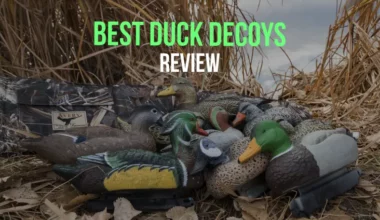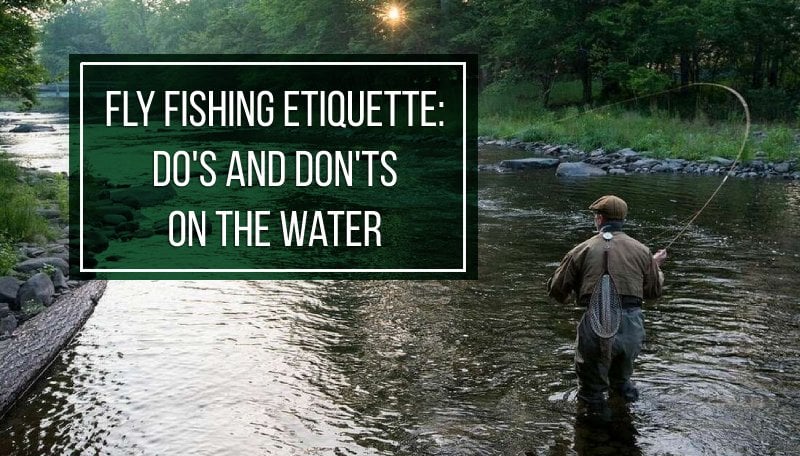With terabytes of information on fishing available, beginners might find it challenging to understand what to fish, where, and how. If this sounds like you, then this guide is a must-read. Here, we explore the best states, places, and times to fish for largemouth bass. Read on!
![Bass Fishing "When & Where": Best States, Spots, Seasons [Guide] 2 largemouth-bass](https://blog.gritroutdoors.com/wp-content/uploads/2024/03/largemouth-bass.jpg)
Largemouth Bass Profile
Best time of year
South: late winter
North: late spring
Best time of day
Low light (early morning, late afternoon, night)
Best states to fish
TX, FL, NY, CA, MI, MN
Appearance
The Largemouth Bass stands out with its recognizable olive-green body and dark lateral line. Its mouth extends beyond the eye as if nature has crafted a hunter equipped for ambush. With a big, unbroken dorsal fin and a tail like a crescent moon, it has a menacing appearance.
Behavior
This formidable predator is most active at dawn, dusk, and night, using low light to hunt. Largemouth Bass prefer shallow waters but may go deeper during the day.
Habitat
Largemouth Bass thrive in various environments like backwaters, ponds, rivers, and reservoirs. They prefer submerged vegetation, logs, rock ledges, man-made structures, and brush piles for their ambush tactics and protection.
Diet and Feeding Habits
Bass aren’t picky eaters; they enjoy a wide variety of insects, crayfish, and smaller fish. However, their diet is opportunistic, and they’ve been spotted chomping down on anything from frogs to tiny mammals, making for quite a diverse dining experience.
Hunting
With a keen sense of sight and the ability to feel vibrations, the Bass patiently waits to launch at its prey. Whether it’s a twitching plastic worm or a wobbling crankbait, the ambush is quick and precise.
Pre-Spawn and Spawning
Largemouth bass typically spawn towards late winter in southern U.S. regions and late spring in the north. A key factor influencing spawning is water temperature. When it hits around 60 degrees, bass intensify feeding and move to shallower waters for nesting. This is the best time to fish for bass. However, handle fish with care during this period.
Post-Spawn and Growth
A few weeks after the spawn, when the fish are hungry and looking to refuel, it’s prime time for anglers to hook some trophy Bass. At this point, they’re really focused on building back their energy, so they’re more likely to go for the bait.
Best Bass Fishing Places in TX:
O.H. Ivie Lake
![Bass Fishing "When & Where": Best States, Spots, Seasons [Guide] 3 O-H-Ivie-Lake](https://blog.gritroutdoors.com/wp-content/uploads/2024/03/O-H-Ivie-Lake.webp)
20,000 acres
Texas state record: 17 lbs 06 oz on O.H. Ivie Lake in 2022.
O.H. Ivie Lake has been acclaimed as the best spot for bass fishing in the nation, according to Bassmaster Magazine. This Central Texas fishery boasts an environment where anglers consistently find success, making it a prestigious destination for bass fishing enthusiasts seeking top-tier action.
Toledo Bend Reservoir
![Bass Fishing "When & Where": Best States, Spots, Seasons [Guide] 4 Bass Fishing "When & Where": Best States, Spots, Seasons [Guide]](https://blog.gritroutdoors.com/wp-content/uploads/2024/03/toledo-bend-reservoir.webp)
185,000 acres
Toledo Bend Reservoir, straddling the Texas-Louisiana border, is renowned for its exceptional bass fishing. Its vast expanse of water, coupled with abundant aquatic habitats, provides an ideal setting for both quantity and quality of bass, making it a favored spot among competitive and recreational fishermen alike.
Falcon Lake
![Bass Fishing "When & Where": Best States, Spots, Seasons [Guide] 5 Bass Fishing "When & Where": Best States, Spots, Seasons [Guide]](https://blog.gritroutdoors.com/wp-content/uploads/2024/03/lake-falcon.webp)
87,000 to 115,400 acres
Texas state record: 15 lbs 63 oz on Falcon in 2011.
Falcon Lake, located on the Rio Grande, is celebrated for its trophy-sized bass. The lake’s warm waters and rich structure offer perfect conditions for large bass, attracting anglers from all over who are looking to catch a record-breaking fish in its expansive waters.
Sam Rayburn Reservoir
![Bass Fishing "When & Where": Best States, Spots, Seasons [Guide] 6 Bass Fishing "When & Where": Best States, Spots, Seasons [Guide]](https://blog.gritroutdoors.com/wp-content/uploads/2024/03/sam-rayburn-reservoir.webp)
114,000 acres
Texas state record: 16 lbs 80 oz on Sam Rayburn in 1993.
Sam Rayburn Reservoir is another gem in Texas known for its excellent bass fishing opportunities. With its extensive cover, including submerged vegetation and timber, it offers ample habitat for bass to thrive, making it a popular destination for tournaments and leisure fishing.
Choke Canyon Reservoir
![Bass Fishing "When & Where": Best States, Spots, Seasons [Guide] 7 choke-canyon-reservoir](https://blog.gritroutdoors.com/wp-content/uploads/2024/03/choke-canyon-reservoir.webp)
26,000 acres
Choke Canyon Reservoir, situated south of San Antonio, is a hotspot for bass fishing due to its diverse aquatic environments. From shallow flats to deep water structures, it provides a range of fishing scenarios that can challenge and delight anglers looking for a rewarding bass fishing experience.
Lake Fork
![Bass Fishing "When & Where": Best States, Spots, Seasons [Guide] 8 lake-fork](https://blog.gritroutdoors.com/wp-content/uploads/2024/03/lake-fork.webp)
27,000 acres
Texas state record: 18 lbs 18 oz on Lake Fork in 1992.
Lake Fork, east of Dallas, is legendary for producing trophy bass. Its management practices, including slot limits, have cultivated an environment where monster bass are more rule than exception, drawing anglers hoping to land a once-in-a-lifetime catch in its famed waters.
Texas Fishing License & Regulations
TX license year: September 1 through August 31
Daily bag limit: 5 fish for any combination of largemouth, smallmouth, Alabama, Guadalupe, and spotted bass. Bass identification guide.
Possession limit*: 10 fish for any combination.
*Possession limit is the maximum number of fish a person may have before returning home, set at twice the daily bag for game and nongame fish unless specified otherwise.
Minimum length: 14 inches
Exceptions to Freshwater Harvest Regulations: here
TX fishing license requirements:
Residents:
- Residents need a fishing license to fish in Texas waters.
- Exceptions: No license needed for those under 17, born before Jan 1, 1931, or with an intellectual disability participating in approved therapy or fishing with a licensed family member (with appropriate documentation or doctor’s note).
Non-Residents:
- Non-residents also require a license to fish in Texas.
- Exceptions: Those under 17, Louisiana residents 65 or older with a valid Louisiana license, and Oklahoma residents 65 or older are exempt.
License fees:
- Texas Resident: $30
- Texas Senior (for residents 65 or older): $12
- Non-resident: $58
- All-water packages are available: learn more.
Tagging: While you can tag a fish on the outside and let it go back into the water, be careful because tagging can harm the fish. However, it’s not allowed to release a fish if you’ve put any kind of device or substance on it that makes sound, light, or electronic signals to help find or track the fish later.
Baiting:
- Game fish or their parts cannot be used as bait.
- Live bait caught must not be transported away from the body of water where it was caught.
- Commercially purchased live bait can be used if you have a receipt showing where it was bought. It can only be used in the water body adjacent to where it was purchased.
- Local regulations may apply to specific counties, so always check the local rules before fishing.
Best Bass Fishing Places in FL:
Fellsmere Reservoir
![Bass Fishing "When & Where": Best States, Spots, Seasons [Guide] 3 O-H-Ivie-Lake](https://blog.gritroutdoors.com/wp-content/uploads/2024/03/O-H-Ivie-Lake.webp)
10,000 acres
Fellsmere Reservoir (along with Stick Marsh and Kenansville Lake) stands out as a premier bass fishing destination, renowned for its abundant largemouth bass population. The combined waters of these areas offer a diverse habitat that supports not only quantity but also quality, with anglers regularly reporting catches over 8 pounds. The catch-and-release policy in place ensures the sustainability and continued growth of the bass population, making it an ideal spot for both competitive and recreational fishing.
Orange Lake
![Bass Fishing "When & Where": Best States, Spots, Seasons [Guide] 10 lake-orange](https://blog.gritroutdoors.com/wp-content/uploads/2024/03/lake-orange.webp)
13,000 acres
Orange Lake, located in North Florida, is a haven for bass anglers seeking both size and numbers. The lake’s rich aquatic plant life and varied structure provide perfect conditions for largemouth bass to thrive. Seasonal fluctuations in water levels create dynamic fishing opportunities, with spring and fall being particularly productive times to target trophy-sized bass.
Lake Okeechobee
![Bass Fishing "When & Where": Best States, Spots, Seasons [Guide] 11 Bass Fishing "When & Where": Best States, Spots, Seasons [Guide]](https://blog.gritroutdoors.com/wp-content/uploads/2024/03/okeechobee.webp)
730 square miles
Lake Okeechobee, known as Florida’s inland sea, is one of the most famous bass fishing lakes in the United States. Its vast expanse teems with largemouth bass, thanks to the extensive cover provided by vegetation like hydrilla, reeds, and lily pads. Anglers here enjoy year-round fishing success, with the winter months offering peak conditions for landing big bass.
Lake Tohopekaliga
![Bass Fishing "When & Where": Best States, Spots, Seasons [Guide] 12 lake-tohopekaliga](https://blog.gritroutdoors.com/wp-content/uploads/2024/03/lake-tohopekaliga.webp)
23,000 acres
Lake Tohopekaliga, often referred to as Lake Toho, near Kissimmee, Florida, is a top destination for trophy bass fishing. Its clear waters, combined with a healthy vegetation cover and a well-managed fish population, make it a hotspot for both tournament and casual anglers. Lake Toho’s proximity to Orlando also makes it a convenient fishing getaway with the potential for exceptional catches.
Lake Seminole
![Bass Fishing "When & Where": Best States, Spots, Seasons [Guide] 13 lake-seminole](https://blog.gritroutdoors.com/wp-content/uploads/2024/03/lake-seminole.webp)
37,500 acres
Lake Seminole, straddling the Florida-Georgia border, offers a unique bass fishing experience with its mix of clear and stained waters. The lake’s diverse habitats, including submerged timber, weed beds, and grass flats, are ideal for largemouth and hybrid striped bass. Year-round fishing is productive, with spring and fall being especially good times to target larger bass amidst the lake’s scenic beauty.
Florida Fishing License & Regulations
FL license year: Recreation licenses expire 1 year from the date issued.
Daily bag limit and minimum length: for black bass (including largemouth, Suwannee, spotted, Choctaw, and shoal bass), the common limit is 5 fish per angler per day, with only one of these allowed to be 16 inches or longer.
Special freshwater bag and length limits (for the places mentioned above):
- In Lake Seminole, including its boundaries defined by Florida State Road No. 271, Jim Woodruff Dam, a line east of Chattahoochee Marina to the junction of the Flint and Chattahoochee Rivers, and the Herman Talmadge Bridge, fishing regulations specify limits for several species: anglers can keep up to 10 black basses (each at least 12 inches long). The total possession limit across all species is capped at 50 fish.
- At the Fellsmere Water Management Area (also known as Headwaters Lake and Egan Lake) in Indian River County, fishing regulations mandate the immediate release of all black bass and the use of circle hooks for natural bait over 3 inches.
- More on special freshwater bags and length limits: here
Regulations:
- Game fish (including black bass) can only be captured using a pole, line, rod, or reel, with no restrictions on the number of rods per angler.
- The use of free-floating devices, firearms, explosives, electricity, spear guns, poison, chemicals, or underwater swimming for catching freshwater fish is illegal.
- Selling, offering for sale, or transporting any freshwater game fish out of state is prohibited, except for a two-day bag limit by licensed anglers.
- Possession of freshwater fish with illegal fishing gear is prohibited, with exceptions for certain nets and traps specified by size and type.
- Game fish such as black bass, striped bass, white bass, peacock bass, crappie, and panfish cannot be filleted or have their head or tail fin removed until fishing has concluded for the day.
- Firearms may be possessed for lawful purposes but cannot be used to catch fish.
FL fishing license requirements:
In Florida, anyone engaged in fishing must have a valid license, including those casting a line or practicing catch and release. Licenses are also needed for individuals assisting in any way with fishing activities.
Specific groups are exempt from needing a recreational freshwater fishing license as well as certain permits:
- Youth under 16 years old.
- Resident seniors aged 65 or older with valid proof of age or residency, or a Resident 65+ Hunt/Fish Certificate.
- Residents fishing on their homestead in their county of residence, or minor children on their parent’s homestead.
- Florida residents certified as totally and permanently disabled with a Florida Resident Disabled Person’s Hunting and Fishing License.
- Florida residents in the Armed Forces on leave for 30 days or less with orders.
- Observers or filmers not assisting in fishing.
- Disabled veterans, active or reserve duty military members, their immediate family, and assistants participating in events with a Military/Disabled Veteran Event License Exemption Permit.
- More
License fees:
- Florida Resident Annual: $17
- Florida Resident Five-Year: $79
- Non-resident Annual: $47
- Non-resident 3-day: $17
- Non-resident 7-day: $30
- More on license fees: here
- License-free freshwater days:
- 1st consecutive Saturday and Sunday in April
- 2nd consecutive Saturday and Sunday in June
Baits:
For bait, freshwater shrimp, golden shiners of any size, or other nongame fish under 8 inches may be caught (unless prohibited) using:
- Cast nets with mesh ≤1 inch.
- Minnow dip nets ≤4 feet in diameter.
- Minnow seines with mesh ≤1 inch, ≤20 feet long, and ≤4 feet deep.
- Minnow traps ≤24 inches long and ≤12 inches in diameter, funnel entrance ≤1 inch.
Game fish caught this way must be immediately released. Selling bait requires a commercial license.
Largemouth bass and its parts can’t be used as bait.
Best Bass Fishing Places in NY:
St. Lawrence River
![Bass Fishing "When & Where": Best States, Spots, Seasons [Guide] 14 st-lawrence](https://blog.gritroutdoors.com/wp-content/uploads/2024/03/st-lawrence-1.webp)
St. Lawrence River, particularly around the Thousand Islands area, has earned its reputation as a premier bass fishing destination. After being named the best bass fishery in 2022 by Bassmaster, it continues to attract anglers seeking both quality and quantity in smallmouth and largemouth bass populations. Its expansive waters and diverse habitats support a thriving bass ecosystem, making it a top choice for competitive and recreational fishing.
Lake Erie
![Bass Fishing "When & Where": Best States, Spots, Seasons [Guide] 15 lake-erie](https://blog.gritroutdoors.com/wp-content/uploads/2024/03/lake-erie.jpg)
380,000 acres
Lake Erie, alongside the Upper Niagara River, stands out as one of the top bass fishing locations in New York. Ranked No. 3 among the nation’s best bass fishing spots by Bassmaster Magazine, this massive body of water is renowned for its large smallmouth bass. The lake’s vast size and favorable conditions offer anglers a fertile fishing ground with the potential for both impressive catches and memorable fishing experiences.
Lake Champlain
![Bass Fishing "When & Where": Best States, Spots, Seasons [Guide] 16 lake-champlain](https://blog.gritroutdoors.com/wp-content/uploads/2024/03/lake-champlain.webp)
271,000 acres
Straddling the border between New York and Vermont, Lake Champlain is a freshwater angler’s paradise, offering some of the best bass fishing opportunities in the region. Praised for its abundant largemouth and smallmouth bass populations, the lake provides a mix of shallow and deep habitats that cater to different fishing techniques and seasons. Its scenic beauty and diverse aquatic life only add to the appeal for those casting their lines in search of trophy-sized bass.
Cayuga Lake
![Bass Fishing "When & Where": Best States, Spots, Seasons [Guide] 17 Bass Fishing "When & Where": Best States, Spots, Seasons [Guide]](https://blog.gritroutdoors.com/wp-content/uploads/2024/03/cayuga-lake.webp)
43,000 acres
Cayuga Lake is celebrated for its excellent largemouth and smallmouth bass fishing. As the longest of central New York’s glacial Finger Lakes, it offers a wide range of fishing environments from shallow weedy areas to deeper offshore structures that attract bass. Anglers enjoy not only the quantity but also the quality of bass here, with the lake’s clear waters and healthy ecosystem supporting a robust fish population ideal for both tournaments and casual fishing days.
Lake Ontario
![Bass Fishing "When & Where": Best States, Spots, Seasons [Guide] 18 lake-ontario](https://blog.gritroutdoors.com/wp-content/uploads/2024/03/lake-ontario.webp)
7,320 square miles
The vast expanse and deep, cool waters of Lake Ontario create an ideal habitat for both largemouth and smallmouth bass. Anglers are drawn to its diverse fishing spots, ranging from sheltered bays and marshy inlets to rocky shores and offshore structures. The lake’s accessibility and the size of the bass population make it a favored spot for both competitive tournaments and leisurely fishing outings.
Oneida Lake
![Bass Fishing "When & Where": Best States, Spots, Seasons [Guide] 19 oneida-lake](https://blog.gritroutdoors.com/wp-content/uploads/2024/03/oneida-lake.webp)
79.8 square miles
Oneida Lake is recognized for its consistent production of quality bass, including an increasing population of robust smallmouth bass. Covering 79.8 square miles, it is the largest lake entirely within New York State, offering a variety of habitats such as shallow weedy areas for largemouth bass and deeper waters for smallmouth bass. The lake’s reputation for good numbers of bass, combined with its scenic surroundings, makes it a popular choice for anglers seeking both recreational and competitive fishing experiences.
New York Fishing License & Regulations
NY license year: Annual license expires 1 year from the date issued.
Statewide Largemouth & Smallmouth Bass seasons, bag limit, and minimum length:
Dec 1, 2023 – June 14, 2024 – Catch and Release only, Artificial lures only
Special regulations: see guide
Regulations:
Possession and Daily Limits:
- Individuals are prohibited from possessing, harming, or killing fish beyond the specified size and daily limits for each species in a given water body. This includes fish transported in vehicles.
- Fish caught and immediately released unharmed do not count towards the daily limit.
- Anglers can continue fishing for a species if they possess the daily limit, but must release any additional catches of that species immediately.
- A single, uninjured largemouth or smallmouth bass being measured or released from a live well is excluded from the daily limit.
Catch and Release Guidelines:
- Allowed only within the open season for the fish species.
- Handling such as measuring or photographing is permitted without causing harm or extended removal from water.
- Fish must not be kept in any containment device.
Closed Season Restrictions:
- Fishing for a species during its closed season is forbidden, even if the catch is released immediately.
- Fish caught in the closed season must be unhooked and released with no further handling.
NY fishing license requirements:
Individuals aged 16 and older must obtain a fishing license for catching largemouth bass and other freshwater fish via angling, spearing, hooking, longbow, and tip-ups as well as collecting freshwater baitfish for personal use.
Licenses are not needed for:
- Fishing in licensed preserves.
- Participating in Free Fishing Days or free learn to fish clinics.
- Resident landowners engaged in farming, and their immediate families, fishing on their cultivated farmlands.
- Farm fish pond license holders and their immediate families fishing in licensed waters.
- Native Americans fishing on reservation lands.
- Patients at qualifying U.S. Veterans Administration hospitals/facilities in New York State.
License fees:
- Resident Annual: $25 (ages 16-69), $5 (ages 70+)
- Resident 7-day: $12
- Resident 1-day: $5
- Non-Resident Annual: $50
- Non-Resident Resident 7-day: $28
- Non-Resident Resident 1-day: $10
Eligible individuals can access free or reduced-fee annual fishing licenses, typically requiring New York residency. Qualifying groups include:
- Active duty military members
- Military veterans with a disability of 40% or more
- Senior citizens aged 70 and over
- Legally blind individuals
- Full-time non-resident students at New York State colleges or universities
Additionally, New York residents have the option to purchase a lifetime fishing license, enabling them to enjoy fishing throughout their lifetime without the need for renewal.
All freshwater fishing regulations: here
Free fishing days:
Individuals aged 16 and older can enjoy fishing without a license on designated Free Fishing Days. Children under 16 always fish for free.
Scheduled Dates:
- February 17-18 (President’s Day Weekend)
- June 29-30
- September 28 (National Hunting and Fishing Day)
- November 11 (Veterans Day)
![Bass Fishing "When & Where": Best States, Spots, Seasons [Guide] 1 where-and-when-to-fish-for-bass](https://blog.gritroutdoors.com/wp-content/uploads/2024/03/where-and-when-to-fish-for-bass.webp)










